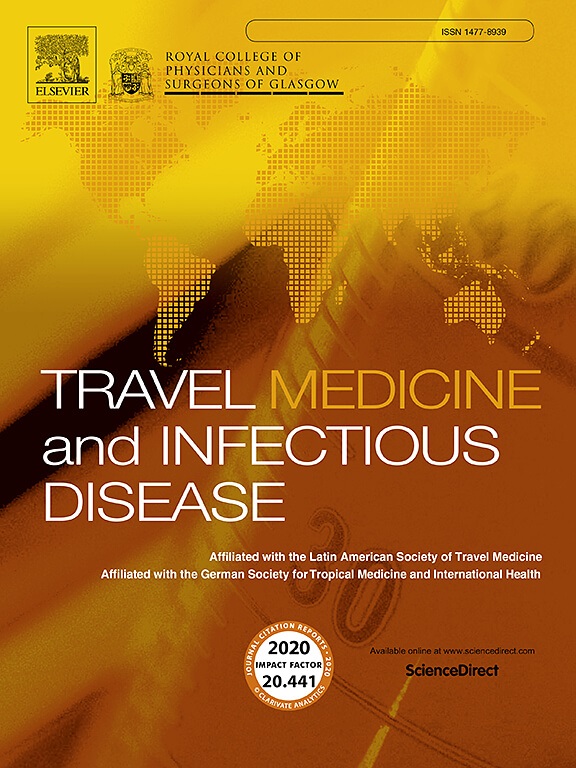Scabies: An updated review from epidemiology to current controversies and future perspectives
IF 4.7
3区 医学
Q1 INFECTIOUS DISEASES
引用次数: 0
Abstract
Scabies is a highly contagious parasitic dermatosis caused by the mite Sarcoptes scabiei var. hominis, affecting over 200 million individuals globally and imposing a significant health burden. Traditionally linked to low socioeconomic status and overcrowding, its prevalence is rising globally, especially among urban and institutional settings. Beyond its cutaneous manifestations, secondary bacterial complications contribute to significant morbidity, particularly in endemic areas.
Advances in non-invasive imaging techniques including ultraviolet dermoscopy, reflectance confocal microscopy and line-field confocal optical coherence tomography, have improved diagnostic accuracy, while molecular assays show promise for enhanced sensitivity. Conventional diagnostics remain dependent on clinical evaluation and microscopic identification of mites, eggs, or scybala.
First-line treatment involves topical and systemic therapies, and topical permethrin, benzyl benzoate, and oral ivermectin are commonly recommended in international guidelines. Emerging drug resistance has prompted research toward optimizing drug regimens and novel therapies, including moxidectin and combination treatments. Outbreaks of scabies in institutional settings, as well as endemic disease in those with limited resources, demonstrate the importance of coordinated public health efforts in the form of early case detection, simultaneous treatment of contacts and other environmental control measures.
In this review, we present an updated and thorough description of scabies, covering the relevant epidemiology, clinical picture and the new diagnostic methods. In summary, by combining new updates and essential unanswered questions, this review describes the current dilemma and covers the latest data in the field.
疥疮:从流行病学到当前争议和未来观点的最新综述
疥疮是一种由人疥疥螨引起的高度传染性寄生虫皮肤病,影响全球2亿多人,造成重大健康负担。其传统上与低社会经济地位和过度拥挤有关,但在全球范围内,特别是在城市和机构环境中,其患病率正在上升。除皮肤表现外,继发性细菌并发症可导致显著的发病率,特别是在流行地区。非侵入性成像技术的进步,包括紫外线皮肤镜、反射共聚焦显微镜和线场共聚焦光学相干断层扫描,提高了诊断的准确性,而分子检测显示出提高灵敏度的希望。传统的诊断仍然依赖于临床评估和显微镜鉴定的螨虫,卵,或scscbala。一线治疗包括局部和全身治疗,国际指南通常推荐外用氯菊酯、苯甲酸苄酯和口服伊维菌素。新出现的耐药性促使研究朝着优化药物方案和新疗法,包括莫西菌素和联合治疗。机构环境中疥疮的爆发以及资源有限的地方的地方病表明,必须通过早期发现病例、同时治疗接触者和采取其他环境控制措施来协调公共卫生工作。在这篇综述中,我们提出了疥疮的最新和全面的描述,包括相关的流行病学,临床图片和新的诊断方法。总之,通过结合新的更新和基本未解问题,本综述描述了当前的困境,并涵盖了该领域的最新数据。
本文章由计算机程序翻译,如有差异,请以英文原文为准。
求助全文
约1分钟内获得全文
求助全文
来源期刊

Travel Medicine and Infectious Disease
PUBLIC, ENVIRONMENTAL & OCCUPATIONAL HEALTH-INFECTIOUS DISEASES
CiteScore
19.40
自引率
1.70%
发文量
211
审稿时长
49 days
期刊介绍:
Travel Medicine and Infectious Disease
Publication Scope:
Publishes original papers, reviews, and consensus papers
Primary theme: infectious disease in the context of travel medicine
Focus Areas:
Epidemiology and surveillance of travel-related illness
Prevention and treatment of travel-associated infections
Malaria prevention and treatment
Travellers' diarrhoea
Infections associated with mass gatherings
Migration-related infections
Vaccines and vaccine-preventable disease
Global policy/regulations for disease prevention and control
Practical clinical issues for travel and tropical medicine practitioners
Coverage:
Addresses areas of controversy and debate in travel medicine
Aims to inform guidelines and policy pertinent to travel medicine and the prevention of infectious disease
Publication Features:
Offers a fast peer-review process
Provides early online publication of accepted manuscripts
Aims to publish cutting-edge papers
 求助内容:
求助内容: 应助结果提醒方式:
应助结果提醒方式:


